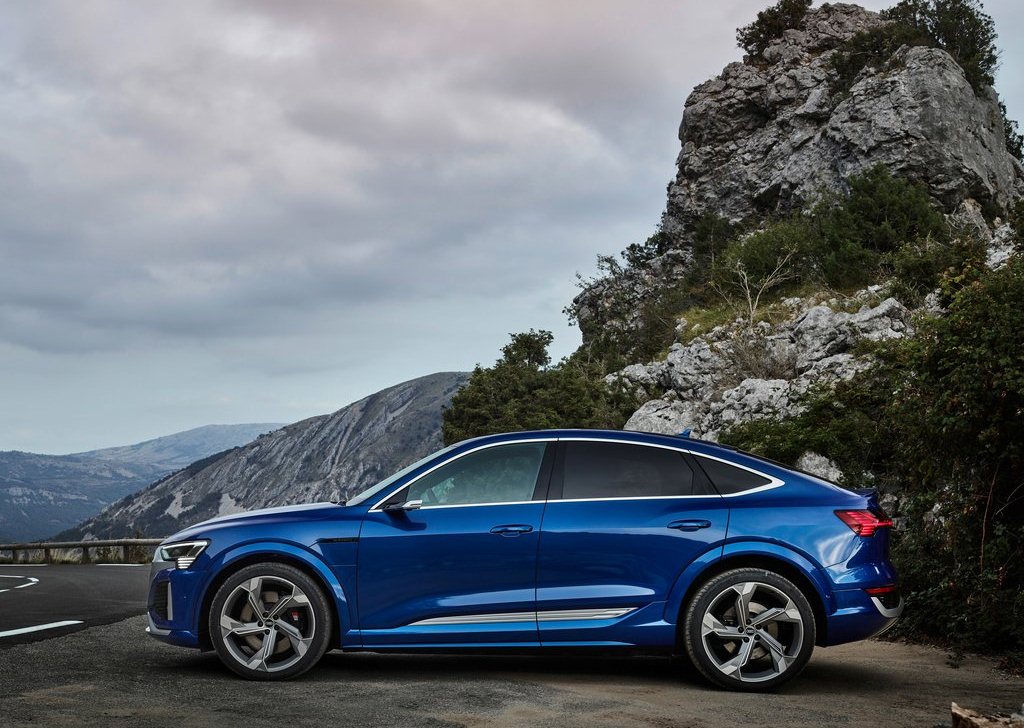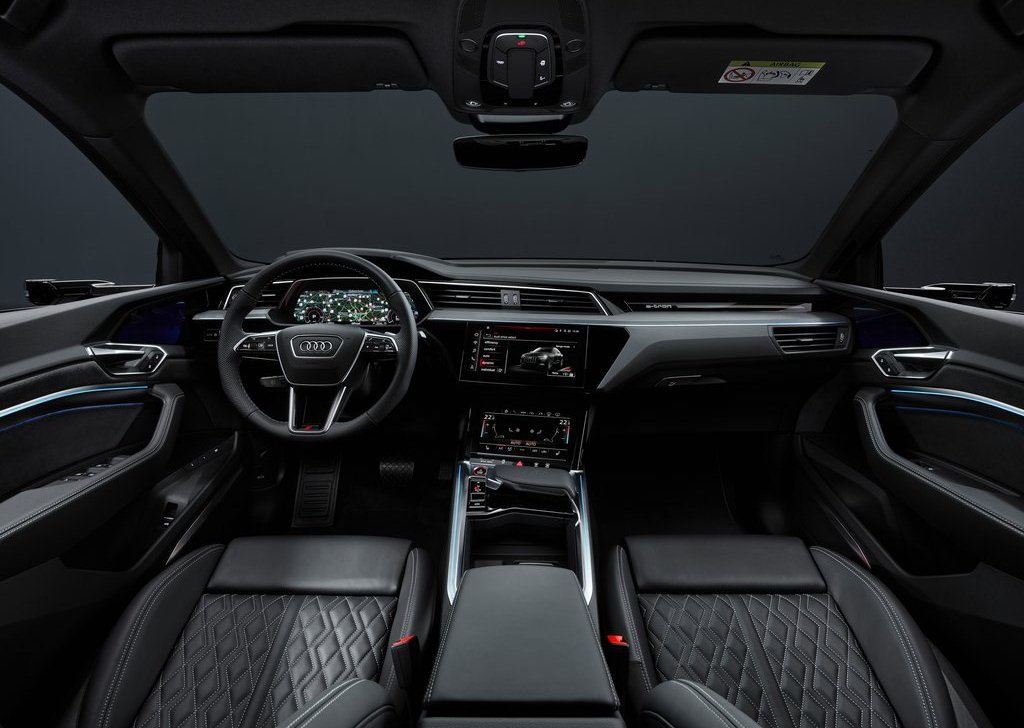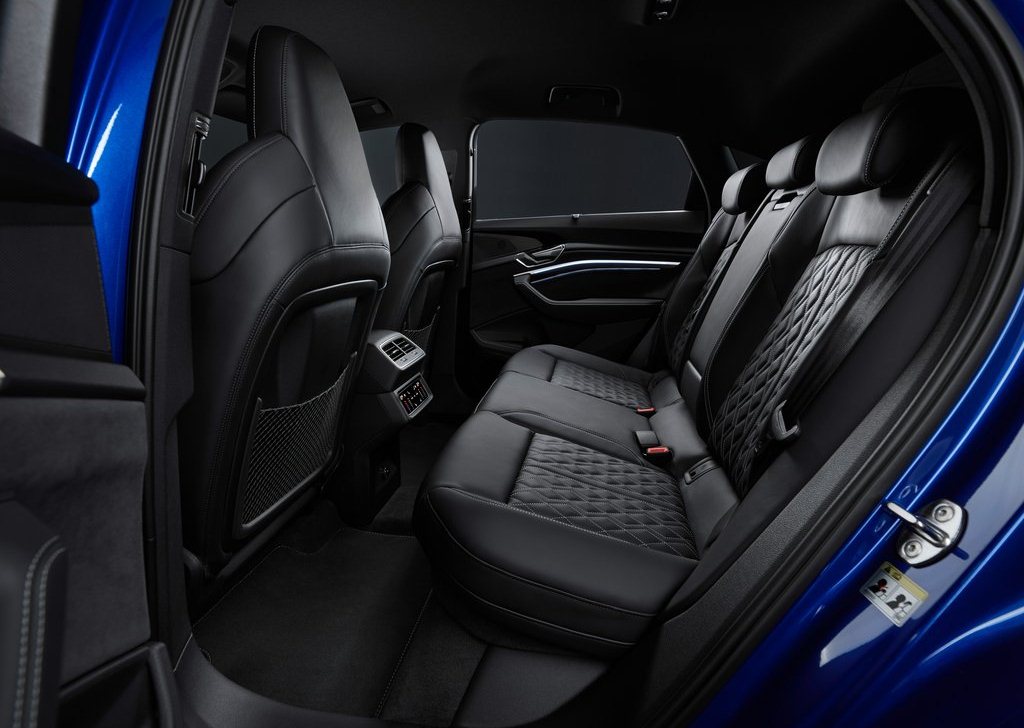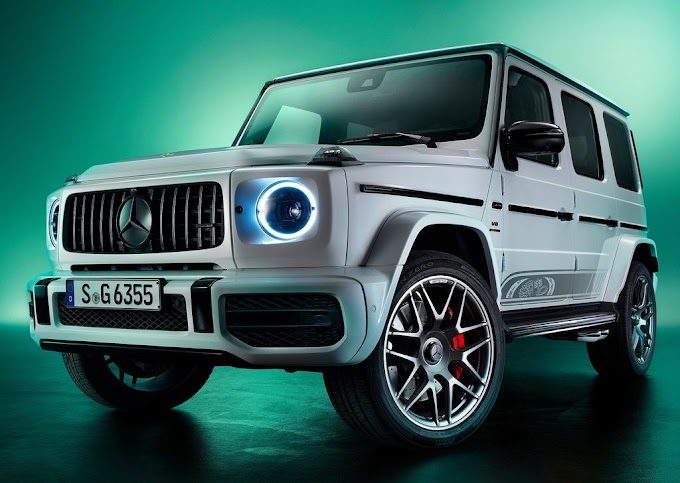The glass panorama roof makes the interior appear lighter and reinforces the sense of airiness and expansiveness. The glass elements open and close electronically. The blackout sunshades are controlled just as conveniently. When it's open, the two-part glass roof improves the climate in the interior thanks to efficient ventilation. An integrated wind deflector reduces wind noise as well. As an alternative to the standard two-zone automatic climate control, Audi is also offering four-zone automatic climate control and an air quality package. The three-stage ventilation provides for comfortable seating, even at high outdoor temperatures. This is available for the standard seats, whose leather is intricately perforated. The highly adjustable individual contour seats are the highlight among the interior options. In addition to pneumatic seat and backrest adjustments, they can also be ordered with a massage function. All furnishings come with optional decorative inlays of porous wood veneers such as grainy ash and sycamore, aluminum or, for the S line and edition S line versions, a carbon fiber structure. New additions include light brown walnut wood and a sustainable technical material made partially from recycled PET bottles.
High-resolution touch displays and voice control
Like all luxury-class Audi models, the Q8 e-tron uses the MMI touch response operating system. Its two large high-resolution displays - the top one with a 10.1-inch diagonal and the bottom one with an 8.6-inch diagonal - replace nearly all conventional switches and knobs. Beyond operation with the two touch displays, a lot of features can be activated through natural voice control. The digital display and operating concept in the Audi Q8 e-tron is rounded out by the standard Audi virtual cockpit with full HD resolution. Specific graphics depict all the important aspects of electric driving, from charging performance to range. On request, a heads-up display can be added. On the German market, the Audi Q8 e-tron will come standard with MMI Navigation plus. Its media center supports the high-speed data transmission standard LTE Advanced, and it has an integrated WiFi hotspot for the passengers' mobile devices. The navigation system intelligently recommends destinations based on previously traveled routes. On top of that, the Audi connect Navigation and Infotainment package includes car-to-X services.
Materials from recycling processes
The Audi Q8 e-tron will be certified as net-carbon-neutral1 for customers in Europe and the USA. Audi also uses recycled materials for some components in the Audi Q8 e-tron. These materials, treated through a recycling process, reduce the amount of resources used and ensure a closed, efficient and sustainable material loop.
In the interior of the Audi Q8 e-tron, Audi uses recycled materials for insulation and damping, as well as for carpeting. The decorative inlay above the display, called the Tech Layer, is available with a new anthracite-colored technical material that's partially composed of recycled PET bottles. With the S line equipment package, the sport seats are upholstered in synthetic leather and the microfiber material Dinamica. Dinamica is made from up to 45 percent polyester fibers that are manufactured from recycled PET bottles, used textiles and fiber residue. In contrast to previous microfiber quality, the production of Dinamica is also solvent-free - another contribution to environmental protection.
Furthermore, some safety-related components that partially comprise mixed automotive plastic waste treated through a chemical recycling process are used for the first time - specifically, the plastic covers for the seatbelt buckles. As part of the PlasticLoop project, Audi worked with the plastics manufacturer LyondellBasell to establish a process in which chemical recycling will be used for the first time to reuse mixed automotive plastic waste in the series production of the Audi Q8 e-tron. In this process, jointly implemented with LyondellBasell, plastic components from customer vehicles that can no longer be repaired are dismantled and separated from foreign materials such as metal clips before being shredded and processed into pyrolysis oil through chemical recycling. This pyrolysis oil is then used as a raw material in the production of new plastics in a mass-balance approach.



















![2026 Kia Sportage [EU] Review: A Refined European Crossover with Bold Style and Electrified Options](https://blogger.googleusercontent.com/img/b/R29vZ2xl/AVvXsEgqMRwJE1m90uCMgRSB6oc4bAzmAaKXJlNoCwavK5fXHaphLYY1sUVXdxUC94zuj95CdjDG2SqRnUBYMqta-dapTLIaHhzEdJAS821ldVMQOKfAZNpQlZ5fYTwKzKbKj8ad9QeKlaQPcNLRZ6zaGvuXhsg1kQ6zQCQqYtjmOM8q9u-a7Nl3WYjp773OLXJR/w680/2026%20Kia%20Sportage%20%5BEU%5D_01.jpg)



0 Comments